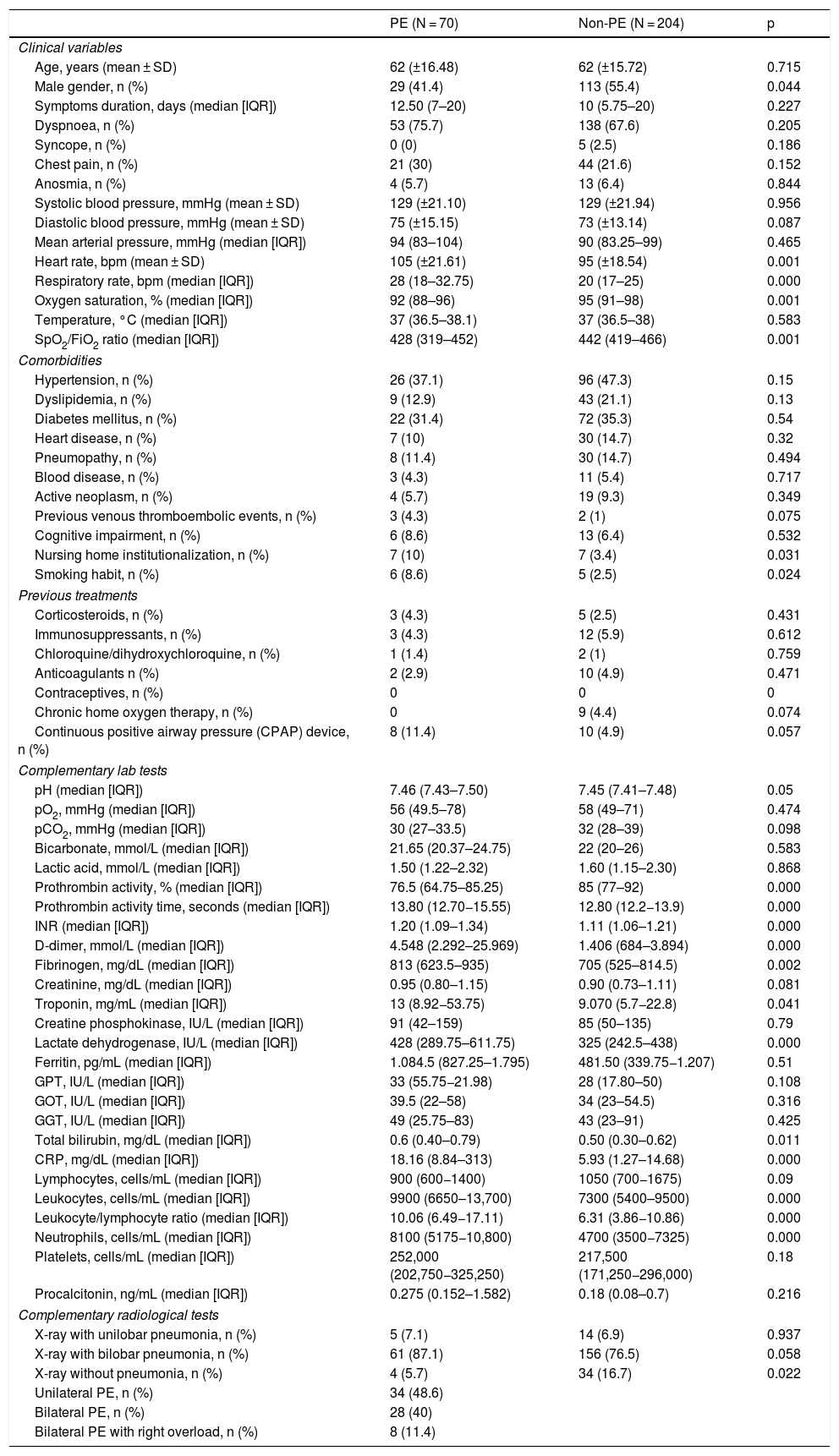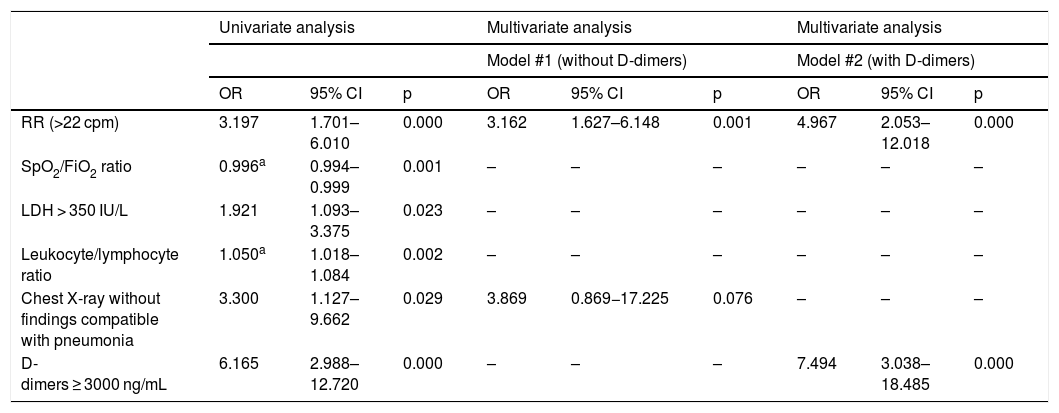To determine the predictive factors of pulmonary thromboembolic (PTE) in patients with SARS-CoV-2 infection (COVID-19) assessed in the emergency department at a tertiary hospital during the first pandemic wave.
MethodsObservational single-center study conducted in a retrospective cohort of patients with confirmed SARS-CoV-2 infection (or high clinical-radiological suspicion) who underwent PTE screening by computed tomography pulmonary angiography (CTPA). Predictive factors of PTE were explored using logistic regression, creating two predictive models (without or with D-dimer values).
ResultsOut of a total of 274 CTPA performed, 70 procedures presented diagnostic findings of PTE, representing a cumulative incidence of 25.54% (95% confidence interval [CI]: 20.49–31.14). In the non-D-dimer based model, respiratory rate >22 bpm (odds ratio [OR]: 3.162; 95% CI: 1.627–6.148; p = 0.001) and the absence of findings suggestive of COVID-19 in plain chest X-ray (OR: 3.869; 95% CI: 0.869–17.225; p = 0.076) were predictors of PTE. In the D-dimer-based model, tachypnea remained as a predictive factor (OR: 4.967; 95% CI: 2.053–12.018; p < 0.001), as well as D-dimers > 3000 ng/mL (OR: 7.494; 95% CI: 3.038–18.485; p < 0.001).
ConclusionsThe presence of tachypnea (>22 bpm) and the absence of radiological findings suggestive of SARS-CoV-2 infection in the chest X-ray, in addition to D-dimer values >3000 ng/mL, were identified as predictive factors of PTE in patients with COVID-19.
Pretendemos determinar los factores predictores de enfermedad tromboembólica pulmonar (ETEP) en pacientes con infección por SARS-CoV-2 (COVID-19) atendidos en el servicio de urgencias de un hospital terciario durante la primera ola pandémica.
MétodosEstudio observacional unicéntrico realizado en una cohorte retrospectiva de pacientes con infección confirmada por SARS-CoV-2 (o alta sospecha clínico-radiológica de COVID-19) sometidos a despistaje de ETEP mediante tomografía computarizada de arterias pulmonares (TCAP). Se exploraron los factores predictores de ETEP mediante regresión logística, creándose dos modelos predictivos (sin o con los valores de dímeros-D).
ResultadosDe un total de 274 TCAP realizados, 70 procedimientos presentaron hallazgos diagnósticos de ETEP, representando una incidencia acumulada de 25,54% (intervalo de confianza [IC] 95%: 20,49–31,14). En el modelo no ajustado por el nivel de dímeros-D, la frecuencia respiratoria >22 rpm (odds ratio [OR]: 3,162; IC 95%: 1,627–6,148; p = 0,001) y la ausencia de hallazgos sugerentes de COVID-19 en la radiología simple de tórax (OR: 3,869; IC 95%: 0,869–17,225; p = 0,076) fueron predictores de ETEP. En el segundo modelo se mantuvo la presencia de taquipnea (OR: 4,967; IC 95%: 2,053–12,018; p < 0,001), identificándose además un nivel de dímeros-D > 3.000 ng/mL (OR: 7,494; IC 95%: 3,038–18,485; p < 0,001).
ConclusionesLa presencia de taquipnea (>22 rpm) y la ausencia de hallazgos radiológicos sugestivos de infección por SARS-CoV-2 en la radiografía simple de tórax, además de los valores de dímero-D > 3.000 ng/mL, fueron identificados como factores predictores de ETEP en pacientes con COVID-19.








